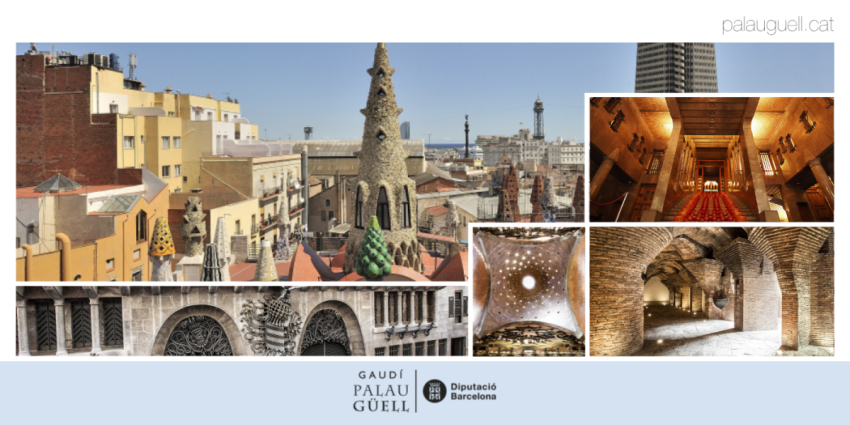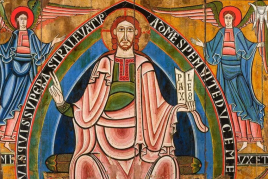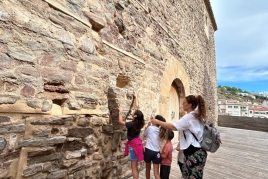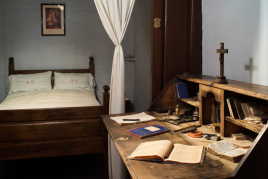The Northern Lights, an unusual spectacle in Catalonia
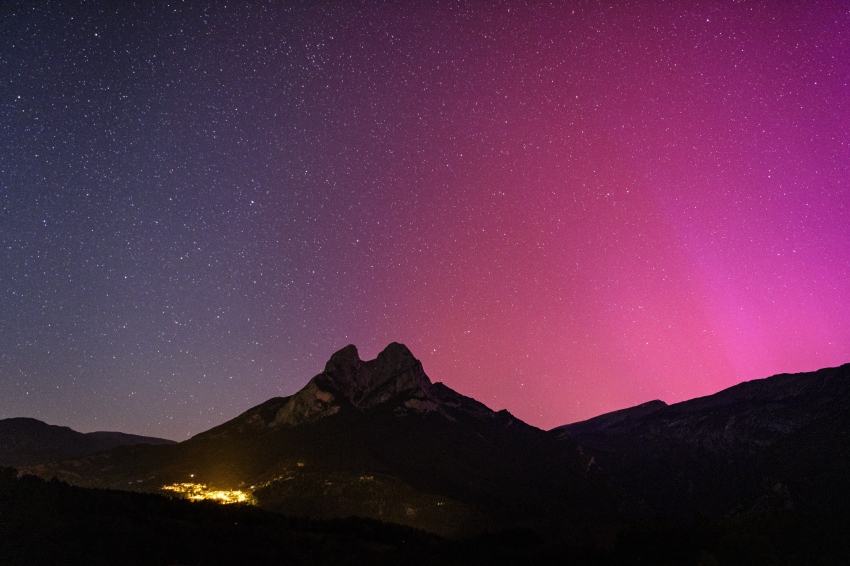
The northern lights are a truly extraordinary and very unusual phenomenon in Catalonia. So much so that the last graphic and documented testimony that is remembered was during the Civil War. Then, one night in 1938, La Vanguardia highlighted that, in Barcelona, the night sky was seen with a very strange reddish color. Popular beliefs at that time, as a result of ignorance, suggested that it was a bombing during the Spanish Civil War. That same phenomenon, that night of 1938 in Madrid, it had been thought that it was a forest fire that was burning in the surroundings of the city and that, for this reason, the sky had that red color at night.
Currently, luckily, we have much more knowledge, tools and technology to be able to see (and predict) the northern lights, especially in the areas where it is most common, that is, in the Nordic or southern latitudes (close to the North Pole or the South Pole). Now, it is true that sometimes there are still unpredictable elements and moments that hold some surprises for us, such as the night of May 11.
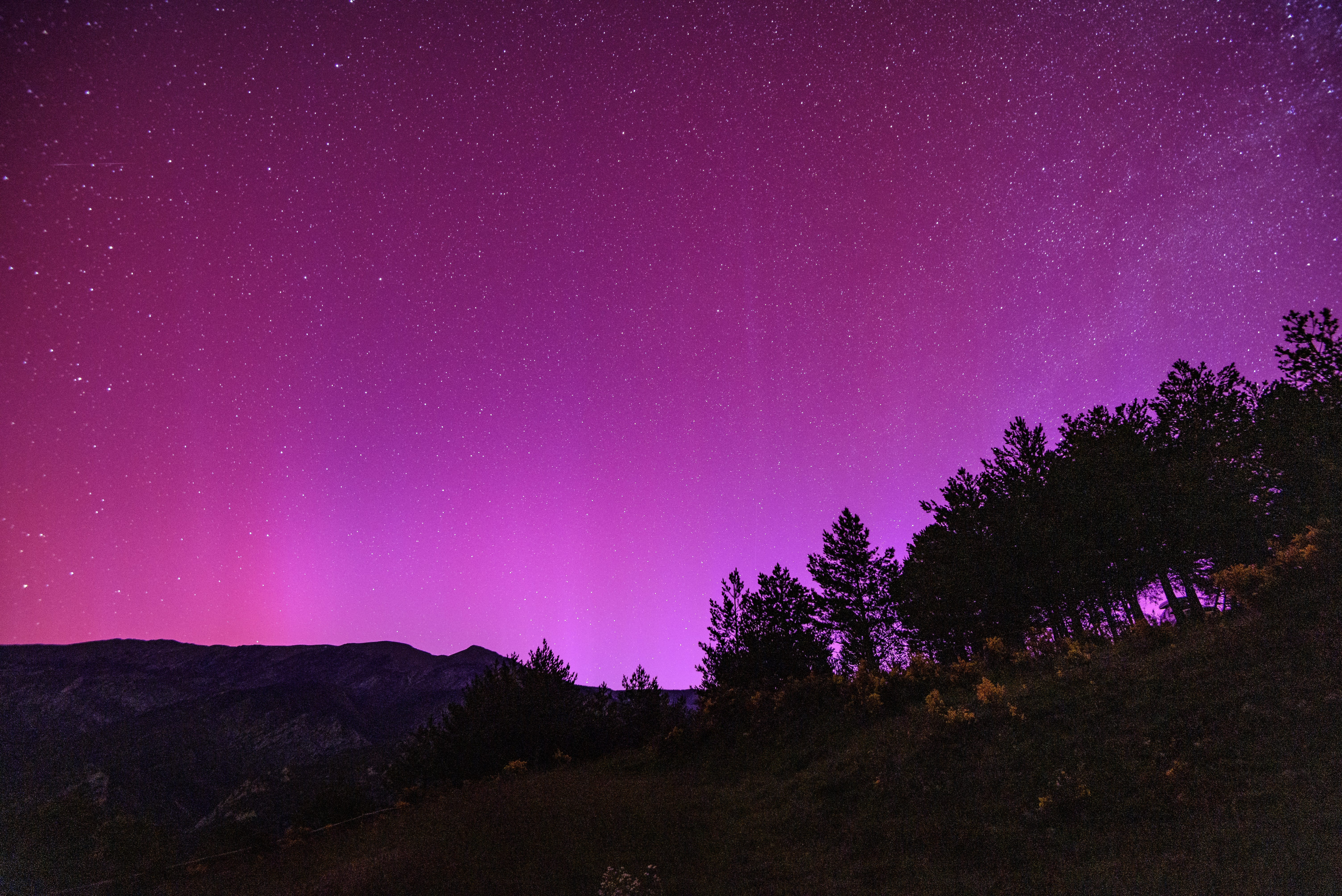
How are polar auroras formed?
That night was preceded by an enormous solar explosion. When large amounts of coronary mass are released, within a few hours a large amount of solar radiation reaches Earth. It usually impacts the magnetic field of our planet, which protects us from this radiation and solar storms. Without that shield, life on Earth would be practically impossible.
When the solar storm comes into contact with the Earth's magnetic field, it causes the reaction of certain particles in the atmosphere, mainly oxygen and nitrogen at altitudes of between 80 and 150 kilometers. This reaction, the result of the collision, causes an ionization process that causes the atoms to emit light at certain frequencies, especially green and red.
The northern lights are measured with an index called KP, which indicates a degree of intensity in a similar way to what we do with earthquakes according to the Richter scale, since the KP scale also goes from 0 to 9. Most nights, the index moves between KP1, 2 or 3 values and only some specific nights of each season reach levels 4 or 5 when there is greater solar intensity. Certainly, it is very rare for this index to reach values of 8 or 9, which are what we had on May 11.
When there are moderate storms that pass once or twice a year, at most you can see the northern lights as far as latitudes such as Scotland or south of Norway, Sweden and Finland. Very exceptionally these northern lights can be seen further south, but the night of May 11 really was one of these occasions, since auroras could be seen in places as rare as in the Alps, Netherlands, but also in the south of Europe, here in Catalonia, in the Valencian Community and in the Balearic Islands, or even further south, in the astronomical observatories of the Canary Islands that are located just 20 degrees north latitude.
Therefore, this was a very extraordinary situation that occurs once every 50 or 100 years. In fact, according to NASA, this solar storm can be classified as one of the most powerful in the last 150 years. And the graphic witness confirms this, since they could be photographed in places as close to the tropics as the Canary Islands or Namibia, which are only 20 degrees latitude with respect to the equator.
In this context, the experience of photographer Sergi Boixader offers us a unique perspective on this natural phenomenon. With his camera at hand, he documented that extraordinary night, providing us with striking images and witnessing one of the most notable northern lights ever seen in Catalonia.
The following paragraphs narrate his photographic adventure, from the fortuitous discovery of the aurora to the exciting documentation of the phenomenon in different parts of the territory.
Lucky to be awake!
The experience that night was totally fortuitous, coincidental and unsought. During Friday morning, I had seen some messages from astronomers and astrophotographers commenting on this large coronary mass ejection from the Sun. However, in no case did I expect it to be seen here in Catalonia, so I had no intention of going to photograph anywhere at night.
It was all a coincidence since that day I went to sleep late after watching the TV3 program Eufòria. When it was practically 2 at night, due to those coincidences of life, I opened Twitter and saw many profiles of people with photographs of the northern lights in places even further south of our house: in the Prades Mountains, in the Valencian Community, in the Balearic Islands. Seeing these images further south, we had to try our luck. The definitive proof of cotton was the Montsec astronomical webcam that looked completely red due to the light of the auroras. Once the cotton test was done, we took the car and went to the most iconic place in our area: Pedraforca.
Do auroras really look like this?
It was three thirty in the morning and I had very little hope of being able to capture anything with the camera, since during the trip up the C-16 the sky looked completely dark and black. This explains why the photos of the northern lights were very different from the experience seen with the naked eye. The camera is capable of capturing much more light and color in the darkness than our eyes, which almost only saw the auroras as if they were light pollution and, at most, as small filaments as if they were a flag or a curtain always in the direction North.
The surprise at the first click of the camera!
Once we reached the foot of Pedraforca and planted the camera, we took the first photo. The impact was huge: seeing that redness in the resulting photo. The surprise was even bigger when I was able to photograph the auroras behind Pedraforca because this mountain, seen from Saldes or Maçaners, does not even have a North orientation (which is where to look to see the northern lights).
Change of plans
After having photographed the auroras from the Pedraforca viewpoint, we tried our luck from another point that had a 100% orientation facing north. As time was running very fast and it was already 4 in the morning (and in May the clarity of the day can already be sensed from 5 in the morning), the only option was to go to a place where you could get there by car and with a more or less clear horizon and without mountains that obscured the perspective. We could only go to one place, which is Pla d'Anyella and Coll de la Creueta.
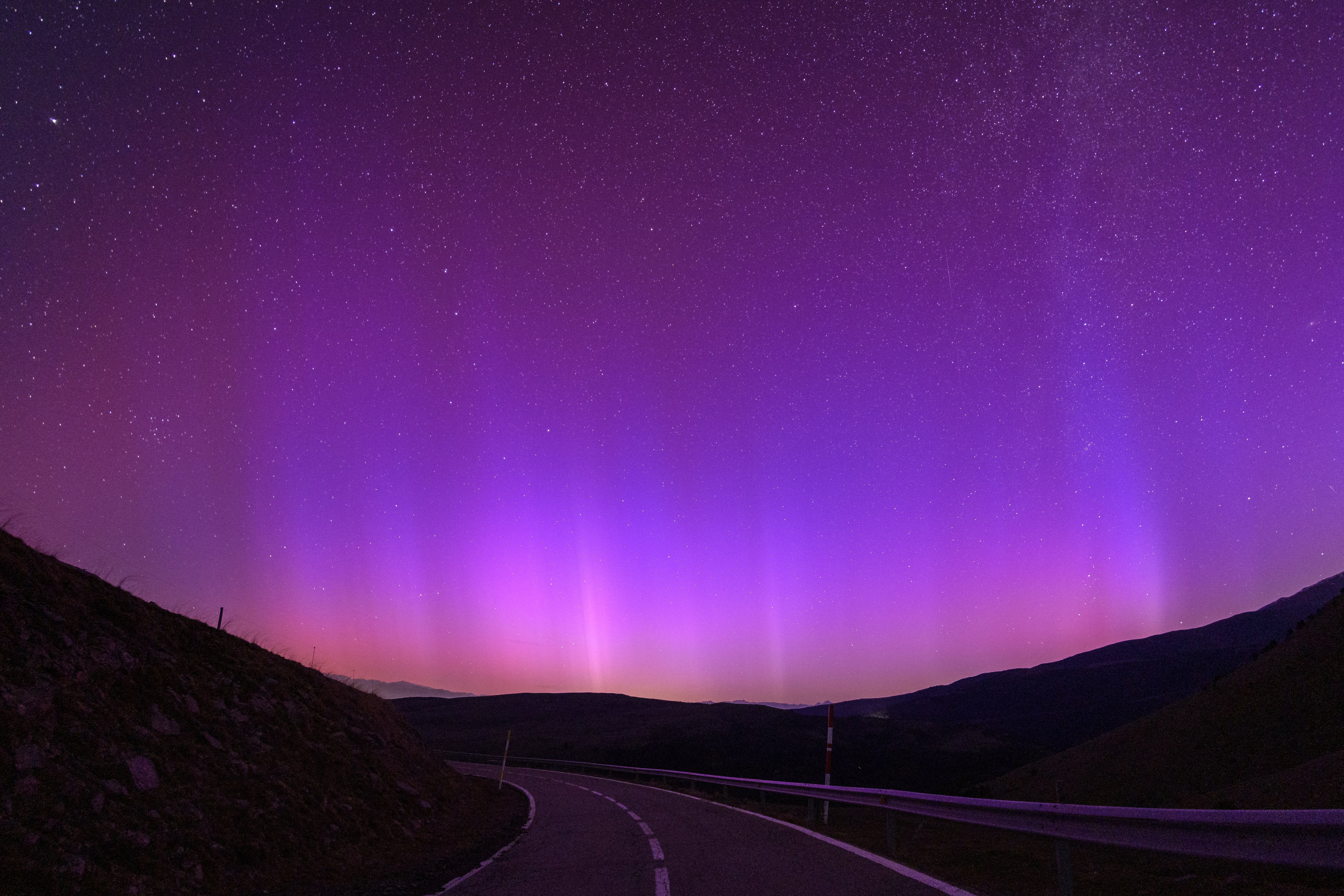
This point, between Berguedà, Ripollès and Cerdanya, had an impressive perspective, since the entire northern horizon could be seen clean, and the beams of light generated by the northern lights could be seen, as if it were a curtain in heaven. However, at first glance it seemed more like light pollution from the towns of Cerdanya or Andorra.
Once we had taken the three or four required photos, we chose to take a timelapse, that is, a succession of camera photos to be able to capture this movement with fast camera, since in a single still photo it was difficult to appreciate the movement. of the dawn
Will there be a second chance?
The next day many people woke up seeing images of the northern lights on the networks and regretting not having been able to see them. Therefore, many tried to try their luck the next night. In my case, I also tried again, this time from the Cerdanya valley and, later, in Cap de Creus.
Unfortunately, the weather was no longer with us and the clouds made quite a mess. We only saw a minimal reddish glow behind the Cerdanya mountains, practically imperceptible, and with a storm cloud in front. Possibly it is the photo that we want to repeat, who knows if on the next occasion, whether in 1 year, 10 years, or the next generation that sees it in 100 years. Only time (and the Sun) will tell this!

